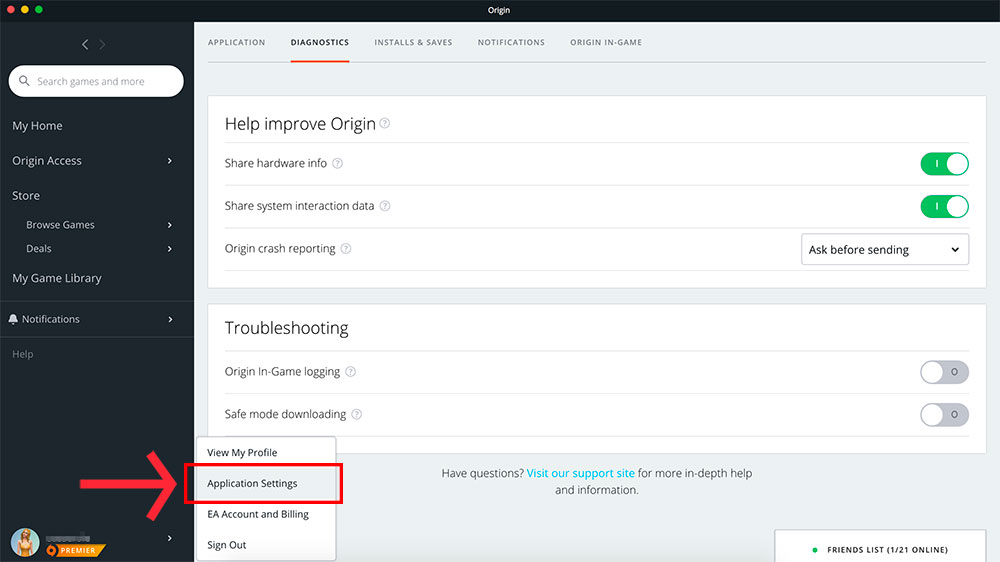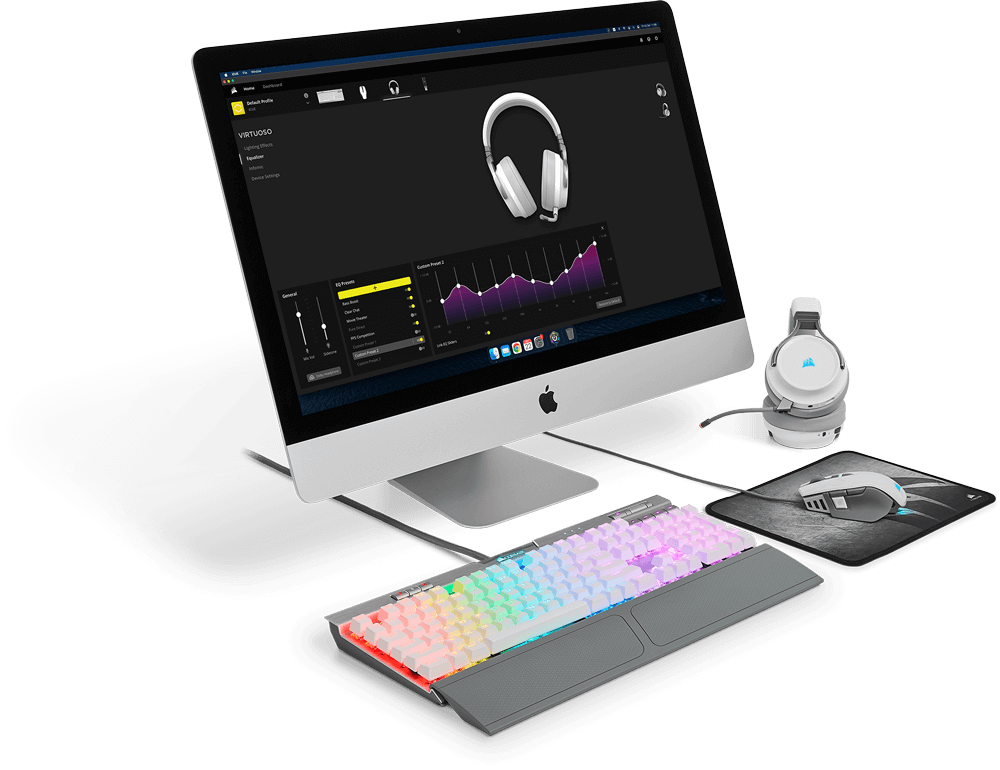Visited: Origin Mac OS
To enjoy all the latest games from EA, you'll need to access this platform, through which you can comfortably buy games and download them as many times as you need to. You can also maintain a list of friends and talk to them whenever you want - even gift them games.
A great thing about Origin is that it allows you to keep everything on the Internet, so you don't have to worry if something happens to your computer. You can always go back and re-download your purchase, even starting a saved game right where you left off, since those files are stored in the cloud.
On top of everything, the platform comes with some free games so that you can start enjoying the system without even having to take out your wallet. Battlefield Heroes, Need for Speed World, and Battleforge are just some of the titles that you can play.
At the moment, Origin is not as essential as Steam. But if EA continues to make its big new releases exclusive to the platform, there's no doubt that you'll need to have it installed on your hard drive.
- Origin For Mac
- Visited: Origin Mac Os X
- Origin Download Mac Os
- Visited: Origin Mac Os 11
- Origin Download

Origin For Mac
Mac OS X & macOS names. As you can see from the list above, with the exception of the first OS X beta, all versions of the Mac operating system from 2001 to 2012 were all named after big cats. MacOS is the operating system used by Apple Macintosh computers. Here we examine History of macOS, from beginnings to now. 1 Pre-System 5 1.1 Macintosh System Software 1 1.2 System Software 2 2 System 5 3 System 6 4 System 7 4.1 'System' designation 4.2 Performa Systems 4.3 'Mac OS' designation 5 Mac OS 8 6 Mac OS 9 7 Mac OS X 7.1 Mac OS X Server 7.2 Mac OS X Developer Preview 7.3 Mac OS X. Macintosh 128 came bundled with what was later called the Mac OS, but then known simply as the System Software (or System). The original System Software was partially based on the Lisa OS, previously released by Apple for the Lisa computer in 1983, and both OS were directly inspired by Xerox Alto. It is known, that Steve Jobs and a number of Apple engineers visited Xerox PARC (in exchange for Apple stock options) in December 1979, to see Alto’s WYSIWYG concept and the mouse-driven. For example, while OS X can be installed on up to two virtual machines for free, you have to be on a Mac when you do so. On Windows, you’ll likely need to buy separate Windows licenses for each VM. Safari's built-in 'Reload Page from Origin' feature can be really helpful if you can't seem to get a site to work properly, as it'll force your Mac to bypass any cached information it has and load.
Mac OS – Complete History of Mac OS

On January 24, 1984, Apple Computer Inc.’s chairman Steve Jobs took to the stage of the Apple’s annual shareholders meeting in Cupertino, to show off the very first Macintosh personal computer in a live demonstration. Macintosh 128 came bundled with what was later called the Mac OS, but then known simply as the System Software (or System).
The original System Software was partially based on the Lisa OS, previously released by Apple for the Lisa computer in 1983, and both OS were directly inspired by Xerox Alto. It is known, that Steve Jobs and a number of Apple engineers visited Xerox PARC (in exchange for Apple stock options) in December 1979, to see Alto’s WYSIWYG concept and the mouse-driven graphical user interface, three months after the Lisa and Macintosh projects had begun. The final Lisa and Macintosh operating systems upgraded the concepts of Xerox Alto with menubars, pop-up menus and drag and drop action.
The primary software architect of the Mac OS was Andy Hertzfeld (see the lower photo, he is standing in the middle). He coded much of the original Mac ROM, the kernel, the Macintosh Toolbox and some of the desktop accessories. The icons of the operating system were designed by Susan Kare (the only woman in the lower photo). Macintosh system utilities and Macintosh Finder were coded by Bruce Horn and Steve Capps. Bill Atkinson (the man with the moustache in the lower photo) was creator of the ground-breaking MacPaint application, as well as QuickDraw, the fundamental toolbox that the Mac used for graphics. Atkinson also designed and implemented HyperCard, the first popular hypermedia system.
Apple Macintosh design team with Andy Hertzfeld,
Visited: Origin Mac Os X
Just like his direct rival, the IBM PC, Mac used a system ROM for the key OS code. However, IBM PC used only 8 kB of ROM for its power-on self-test (POST) and basic input/output system (BIOS), while the Mac ROM was significantly larger (64 kB), because it contained both low-level and high-level code. The low-level code was for hardware initialization, diagnostics, drivers, etc. The higher-level Toolbox was a collection of software routines meant for use by applications, quite like a shared library. Toolbox functionality included the following: management of dialog boxes; fonts, icons, pull-down menus, scroll bars, and windows; event handling; text entry and editing; arithmetic and logical operations.
Origin Download Mac Os
The first version of the Mac OS (the System Software, which resided on a single 400KB floppy disk) was easily distinguished between other operating systems then because it does not use a command line interface—it was one of the first operating systems to use an entirely graphical user interface or GUI. Additional to the ROM and system kernel is the Finder, an application used for file management, which also displays the Desktop. The two files were contained in a folder labeled System Folder, which contained other resource files, like a printer driver, needed to interact with the System Software.
Visited: Origin Mac Os 11
The first Mac OS Control Panel and other applications
Origin Download
The first releases were single-user, single-tasking (only run one application at a time), though special application shells such could work around this to some extent. They used a flat file system called Macintosh File System (MFS), all files were stored in a single directory. The Finder provided virtual folders that could be used to organize files in a hierarchical view with nested folders, but these were not visible from any other application and did not actually exist in the file system.